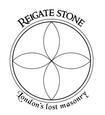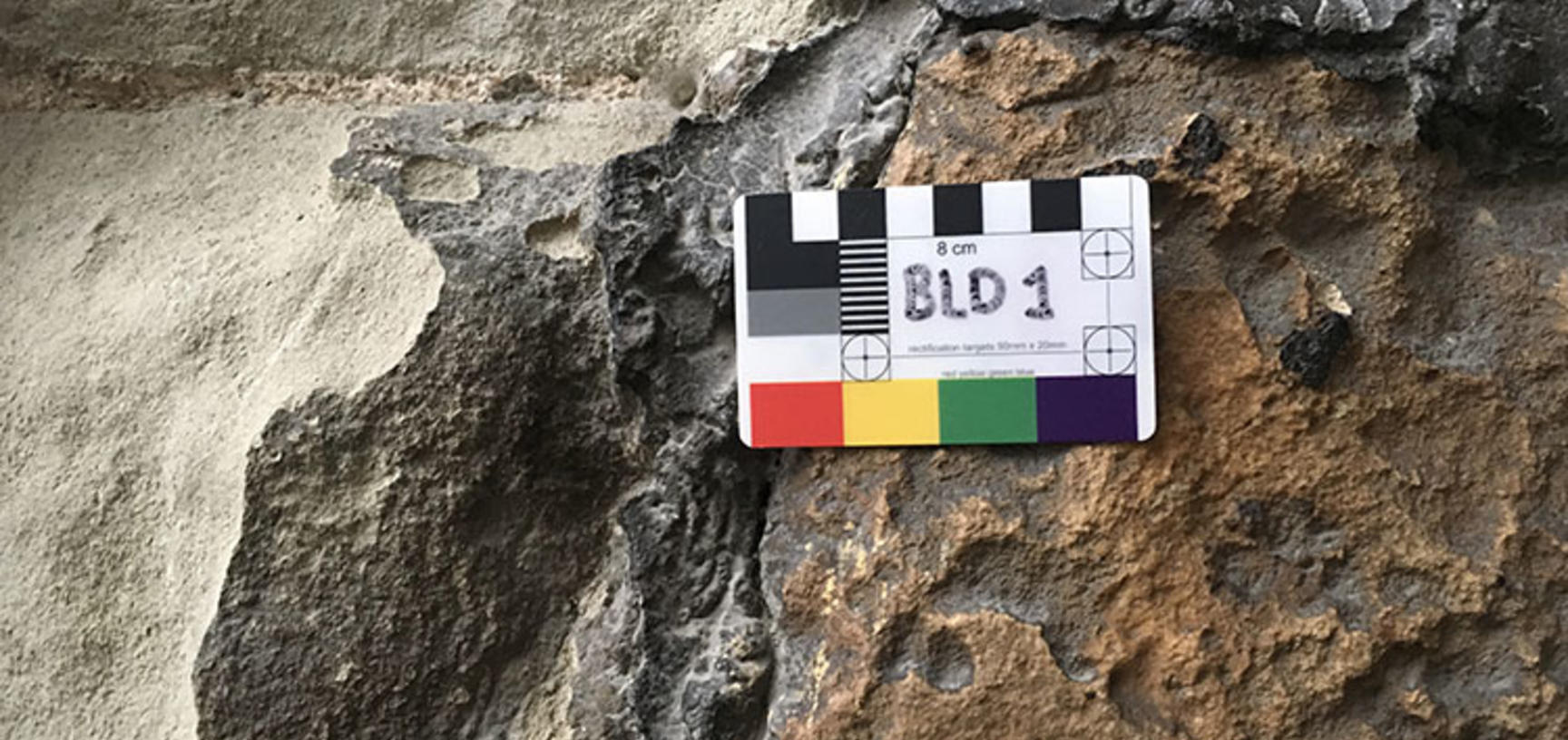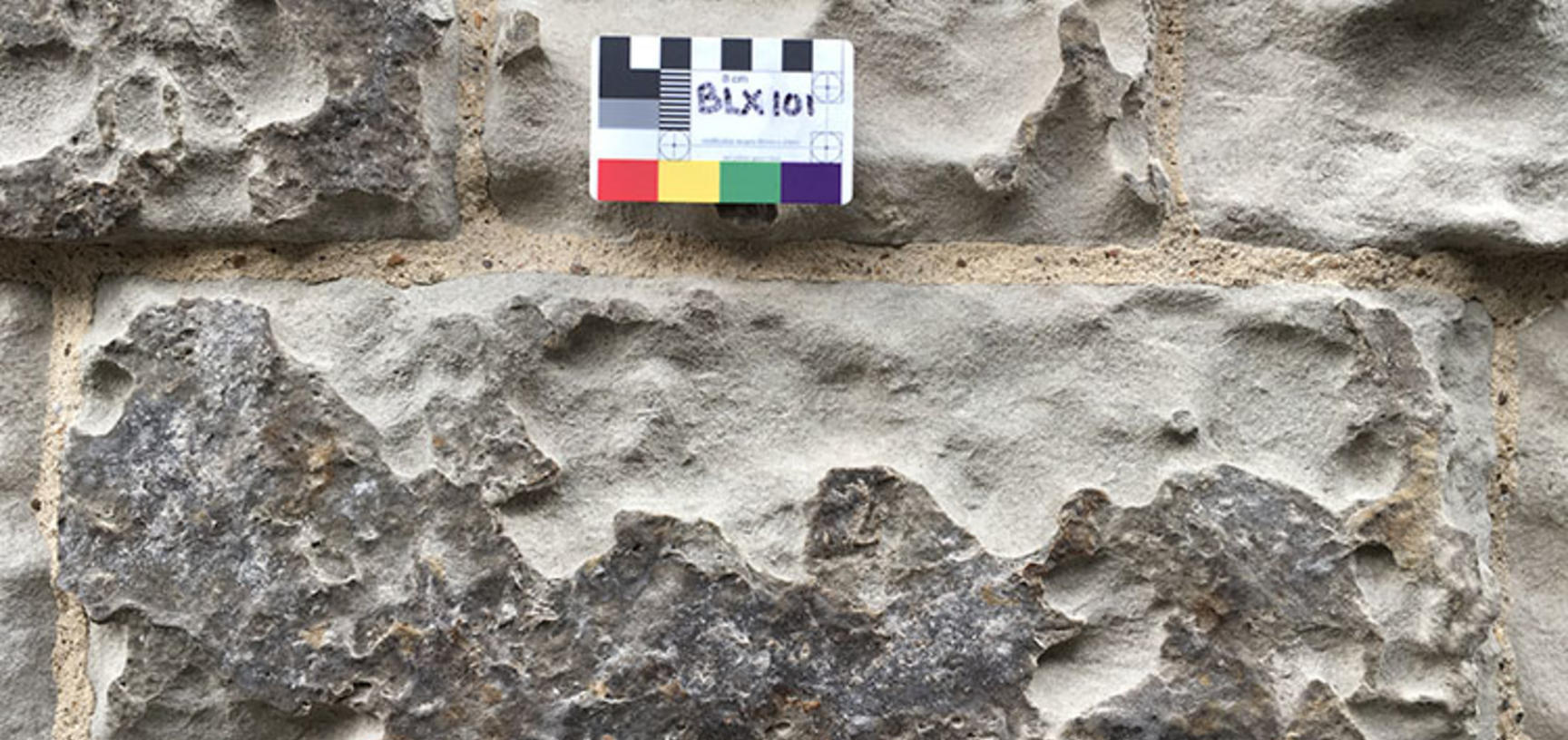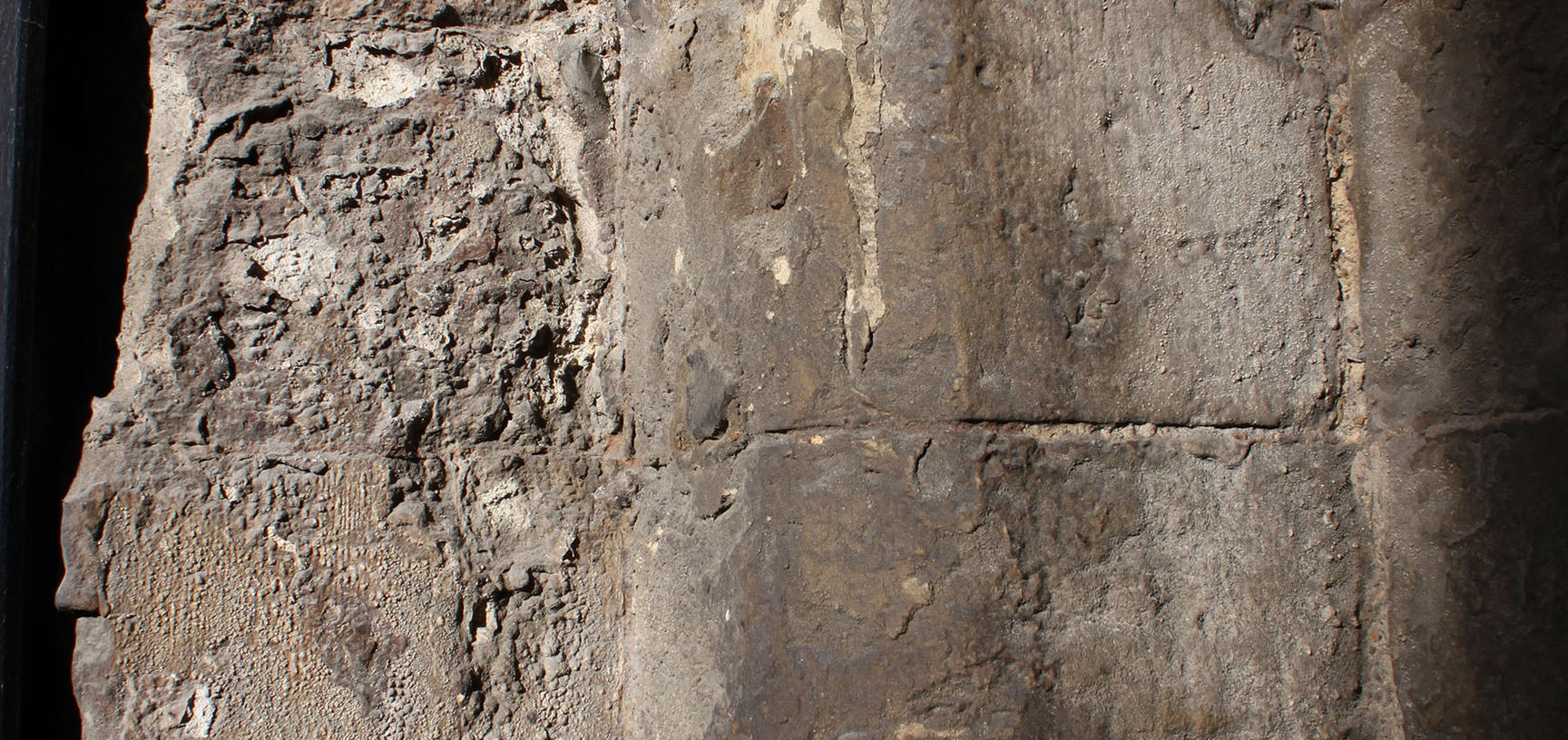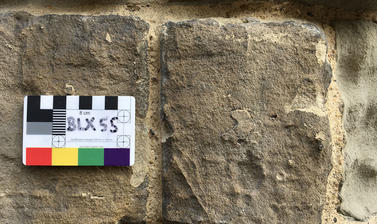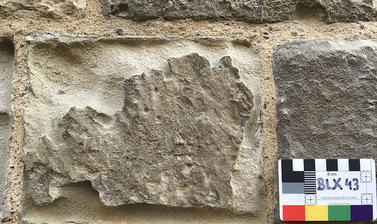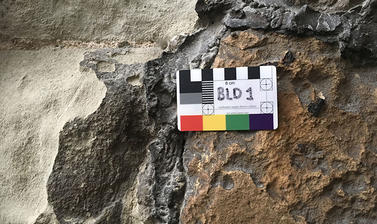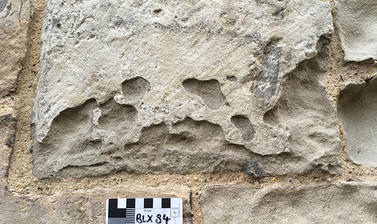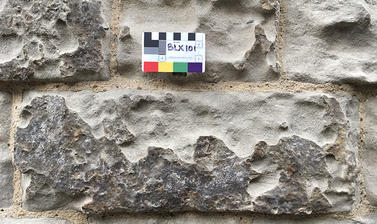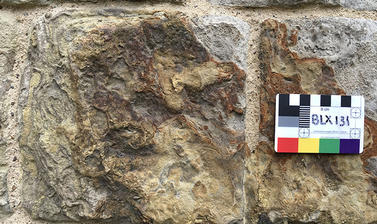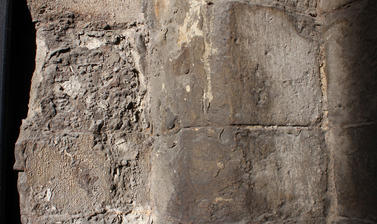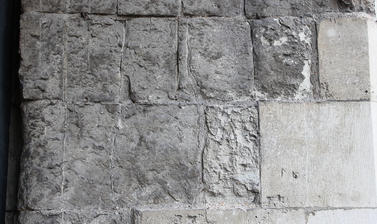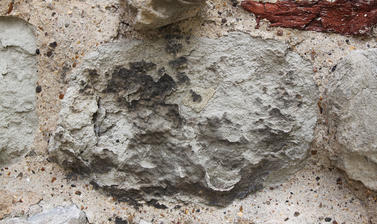Black Crust
Occurence
Sulphation occurs when sulphur dioxide in the atmosphere reacts with calcium carbonate in stone to form a layer of gypsum bonded to the stone surface. The gypsum matrix is prone to trap particulate matter, earning it the common name black crust. Sulphation was widespread in 18th to early 20th century London.
Appearance
Very little research has been done on sulphation on Reigate Stone and any assessment should be cautious. The process of sulphation and its (partial) removal appears to follow a range of different colours and patterns on Reigate Stone. These are likely to relate to underlying stone mineralogy, length and intensity of exposure, and interaction with other decay mechanisms. Crusts are sometimes prone to spalling at the stone interface but can also erode and detach more gradually. Partial detachment of crusts commonly results in alveolization. As crusts detach, they can reveal fragile, powdering substrate prone to rapid erosion.
Condition assessment
| Score |
Coverage (affected units in an area) |
|---|---|
| 1 |
There are no visible crusts in this area of masonry. |
| 2 |
There are remnants of crust visible. |
| 3 | There are small areas with crust either fully covering isolated stones, or remnants across several adjacent stones. |
| 4 | There are large areas with crust visible in this area of masonry, fully covering several adjacent stones |
Previous page (Deposits)
Next page (Salt crust)

